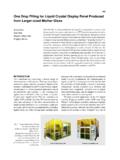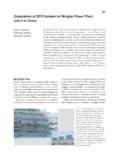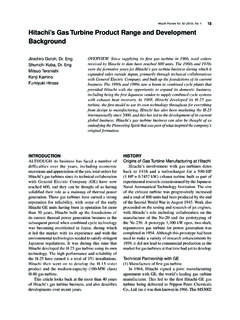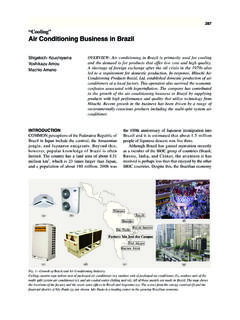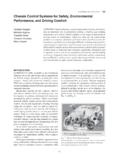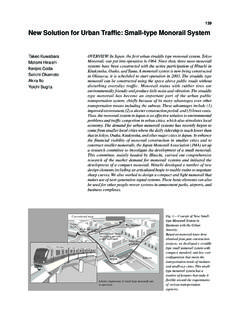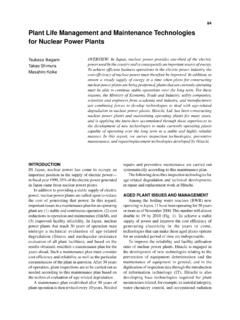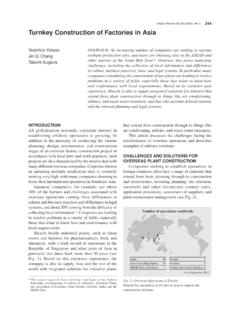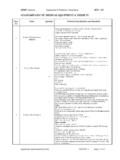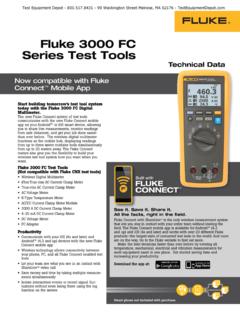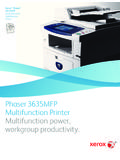Transcription of Materials and Components for Flat Panel Display …
1 Materials and Components for flat Panel Display Applications 32 Materials and Components for flat Panel DisplayApplicationsOVERVIEW: As the networked ubiquitous information society continues todevelop, we are seeing the emergence of an environment in which peoplecan send and receive information practically anywhere and the Display device has a singularly important role to play in thissociety as the exit where information emerges from the network infrastructurefor us to see and act upon, and will become even more important as timegoes on. For flat -screen TVs that are now emerging as one of the most covetedconsumer electronics products, large-screen LCDs predominate for screensizes up to about 30 inches while plasma displays have clear advantagesfor larger screen sizes exceeding 40 inches.
2 Yet in order to provide stablehigh-quality products, a number of technical challenges must be overcome,most notably the reduction of material and component costs to facilitate theuse and drive down costs of longer sheets of motherglass to create largerLCD screens. Hitachi is committed to R&D aimed at improving theperformance and reducing the cost of LCDs, plasma displays, and otherlightweight flat -screen Display technologies, while at the same time bringingmore advanced Materials and Components to market supporting Hitachi shigh standard of Display module ShiikiJunichi ImaizumiTeruhisa MiyataAkira Chinda, Dr. the ubiquitous network society continues to unfold,we are seeing the emergence of an environment thatsupports the ability of people to send and receiveinformation at will anytime and anywhere.
3 The displaydevice has a singularly important role to play in thissociety as the exit where information emerges fromthe network infrastructure for us to see and act flat -screen TVs that are now emerging as a hotconsumer product, large-screen LCDs (liquid crystaldisplays) predominate for screen sizes up to about 30inches while plasma displays have advantages forlarger screens over 40 inches in size. Now that flat -screen TVs are poised for rapid market penetration,Fig. 1 Trends in flat Panel DisplayScreen the larger screen sizes greaterthan 30 inches, large-screen LCDsand plasma displays for thin-screenTVs are the main smaller displays formobile devices size are monopolizedby liquid crystal, but there is a goodchance that organicelectroluminescence displays willbecome available for handhelddevices in a few : liquid crystal displays605040302010 Panel size20042005 Large flat -screen TVFlat-screen TVPC monitorMobile phoneMobile TVNext-generation mobile terminalsIntelligent TV20062007 YearOrganicelectroluminescence Large LCDP lasma displayLiquid crystalfor mobile devicesHitachi Review Vol.
4 55 (2006), No. 1 33the key R&D (research and development) issues arethe deployment of processing equipment capable ofhandling longer sheets of motherglass and developinghigher performance lower cost Components andmaterials that can hold down the cost of flat -screendisplays while perfecting displays that are intuitive andeasy for the greatest number of people to operate (seeFig. 1).While continuing its strong commitment to R&Don LCDs, plasma displays, and other flat -screendisplay technologies for digital consumer products andmobile devices, Hitachi is also dedicated to bringingmore advanced Materials and Components to marketthat support Hitachi s high standard of displayindustrial paper highlights the functions and roles ofsome of the most elemental Materials and componentsof displays, focusing on optical Components , advancedfilm Materials , and module packaging COMPONENTSH olographic WaveguideAlong with advances in the information andcommunications sectors, mobile phones and otherhandheld devices have seen remarkable advances inspeed and functionality.
5 The LCDs used in theseapplications have also seen rapid improvement colorintensity and resolution, and it is desirable that theconstituent backlight provide better luminance to makeup for reduced transmissivity with higher color purityand diminished luminance resulting from smallerpixels. Hitachi Chemical Co., Ltd. has addressed theseproblems with commercialization in August 2000 ofa backlight that incorporates a holographic waveguidebased on Hitachi s own proprietary elliptical color LEDs (light emitting diodes) were usedas the light source for backlights for small- to mid-sizedLCDs, but produced problematic bright lines on thesurface of the waveguide. This is generally preventedby forming various solid light dispersion patterns onthe waveguide surface.
6 However, it was found that theexisting pattern caused the light emitted from thewaveguide to largely disperse over a circular area, whichhad the disadvantage of diminishing the luminescence(see Fig. 2).Our newly developed holographic waveguide formsa holographic pattern with the dispersioncharacteristics shown in Fig. 3, which mitigates theshadowy dark areas between LEDs which inevitablyoccur when LEDs are used as the light source. TheFig. 3 Holographic Diffusion patterns are unique in the linear diffusion patternof the 2 WaveguideLuminescent luminescent linesshow differences inLED light intensityconveyed by patternLight sourceUsual diffusion shapeHolographic diffusion shapenew waveguide also fixes another old problem ofextremely weak vertical dispersion in the verticaldirection between LEDs to prevent this source ofreduced luminance.
7 With development of thiswaveguide, we have already marketed a new backlightthat uses only one prism-type convergence film insteadof two films that are required by conventionalbacklights. Right now this backlight is being usedprimarily with LCDs for color mobile phones, but itshould see extensive use in a diverse array of productsthat use LEDs as a light source (see Table 1).MLAsMLAs (microlens arrays) are one- or two-dimensional arrays of minute lenses ranging fromTABLE 1. Comparison of Waveguide CharacteristicsBacklight conditions: inches, 15 mA input by four LEDsLuminanceUniformityConvergence filmDispersion film2,800 cd/m280%2 film layers1 film layer3,600 cd/m282%1 film layerNot neededItemConventionalNewLED: light emitting diodeLED sideMaterials and Components for flat Panel Display Applications 34several microns to several hundred microns indiameter, and are used in CCD (charge-coupled device)image sensors, 3D Display elements, optical communi-cations, and a host of other optical devices.
8 Indeed,the MLA occupies a central place in Hitachi Maxell,Ltd. s strategy to create more advanced optical devices,and the company is moving aggressively to developMLAs by leveraging its expertise in optical diskmanufacturing. For some time now, we have beenoffering a glass high-precision MLA for industrialoptical equipment manufactured through a combinationof resist reflow and dry etching recently, there has been an intense effort toapply MLAs to LCDs. For example, by installingMLAs directly above a liquid-crystal backlight unitthe optical path from the light source can be controlled,and by incorporating MLAs in the valve of a liquid-crystal projector, the light usage efficiency can bemarkedly improved by exploiting the focusing actionof the lenses.
9 Applying MLAs to semi-transmissiveLCDs is also beneficial, for it not only improvesefficiency by focusing the transmitted light but alsoboosts the reflectivity by expanding the reflecting areaof the pixels. This has enormous advantages becauseit enhances luminosity while improving contrast in thepresence of Maxell is now developing a new methodfor fabricating MLAs for semi-transmissive LCDsbased on earlier development of a new type of stamperand precision alignment technology. The key featureof this new method is that the alignment with liquid-crystal pixels can be precisely controlled to within 1 m which allows lenses to be formed directly onthe liquid-crystal substrate. Fig. 4 shows SEM(scanning electron microscope) and focused spotimages of test lenses made by this process.
10 As one cansee, two types of lenses can be produced by the process:a hexagonal type and a rectilinear type. We verifiedthat the fill-factor is over 95% and the focusingcharacteristics are also recent development of MLAs that exhibit suchexceptional performance will have an enormousbeneficial impact on the performance of LCDs in theyears Resists for LCD Color FiltersColor resists are liquefied resists in which negativeUV (ultraviolet)-cured resists are doped with submicronorganic pigments, and they are used in the manufactureof color filters for LCDs. Hitachi develops and marketsa range of color resist products for LCDs for TVs andfor mobile phones and other handheld LCDs particularly those used for TVs require high contrast and excellent color purity in termsof the color characteristics, and demand uniformcoating using a slit coater on large glass substratesmeasuring at least one meter square in terms ofprocessing characteristics.
